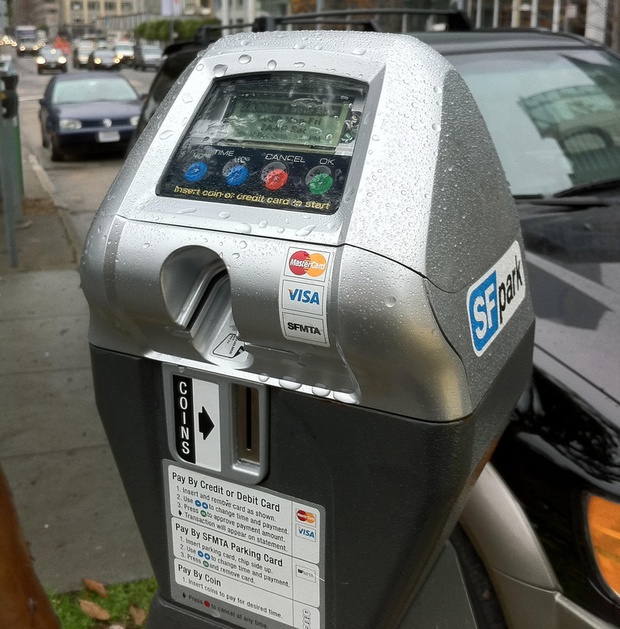Also discussed here: SFpark Project Evaluation Presentation (24 page pdf, San Francisco Municipal Transportation Agency, Jun. 19, 2014)
And here: SFpark Evaluation Shows Parking Easier, Cheaper in Pilot Areas (SFMTA Press Release, Jun. 19, 2014)
Today we review an evaluation of the project in San Francisco which introduced a modern parking pricing system in 2011 that raises (or lowers) parking charges according to demand and monitors in real-time when spaces are vacant or occupied. Results indicate that the project was successful in maximizing occupancy of parking spots and reducing the amount of needless circling by drivers looking for an empty spot(by 30%) - and as a result reduced the amount of fuel consumed and CO2 emitted (by 30%) - all while reducing the average hourly parking charge applied (from $2.69 to $2.58) and the number of citations issued (by 23%). One negative result was that over time the availability of parking spots at peak demand did not result as expected from the increased rates charged which leaves the management of rates and availability for further study. Coming next is application of smart metering to off-street parking lots and buildings.

Key Quotes:
“SFpark changes meter rates based on parking demand to maintain an average occupancy between 60 and 80 percent: When parking on a street is too full (or too empty), the hourly price goes up (or down) to free up (or fill up) spaces.”
“On average over the year of the study, when meter rates rose $1 per hour, occupancy fell 10 percent (and when rates fell $1 per hour, occupancy rose 7 percent).”
“Benefits:
- Average on-street meter rates dropped by $0.11 per hour, or 4 percent;
- Average garage rates dropped by $0.42 per hour, or 12 percent;
- Target occupancy of 60-80 percent was met 31 percent more often;
- Blocks were full (i.e., no available parking) 16 percent less often;
- Average time spent searching for parking decreased by 5 minutes, or 43 percent;
- Meter-related citations decreased by 23 percent; and
- Vehicle miles travelled and greenhouse gas emissions from cars circling for parking decreased by 30 percent.”
“Strategies included:
- Demand-responsive pricing;
- Adding credit and debit card-enabled meters as well as pay by phone to make it easier to pay for parking;
- Longer time limits at meters;
- Real-time information about on- and off-street parking availability; and
- Static wayfinding signs to garages.”










No comments:
Post a Comment